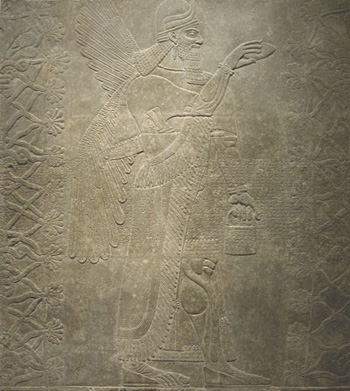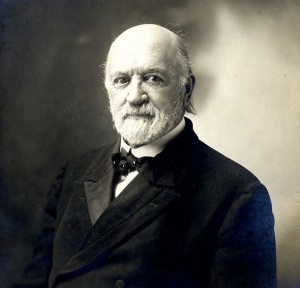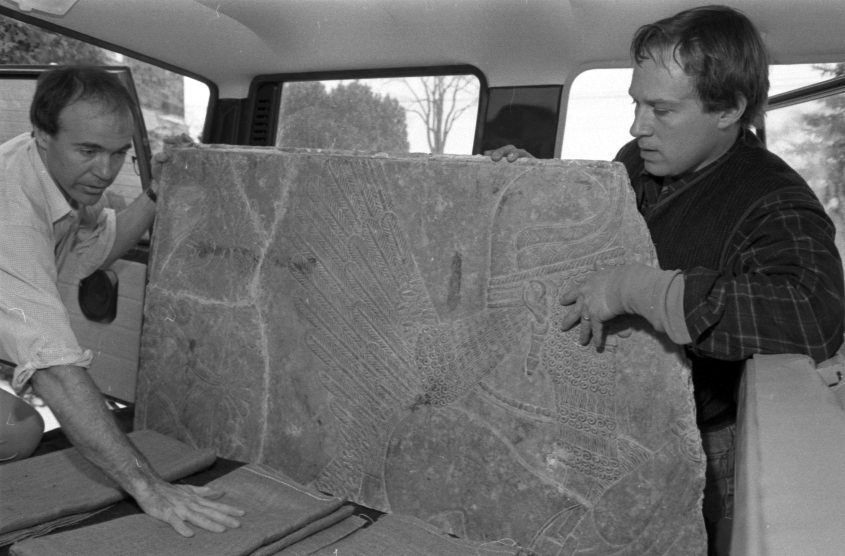When the capital of the Assyrian Empire was moved in the 9th century B.C.E. to what is now Nimrud, Iraq, a new palace for King Ashurnasirpal II was built and adorned with ornate alabaster reliefs. One such carving, which depicts a winged deity pollinating a date palm tree, became Middlebury’s first art acquisition when it was given to the college by alumnus Rev. Wilson A. Farnsworth in 1854.

Rev. Farnsworth had been serving as a missionary in eastern Turkey when the archaeological exhumation of the old palace was taking place and managed to secure one of several unearthed slabs. Now known as the “Winged Genie,” the carving contains a cuneiform inscription extolling the wonders of the king. Upon purchase, Rev. Farnsworth had it cut into sections that could be more easily transported on camelback to the coast. After a long sea voyage, the relief found its way onto a wall in the Library of the Department of Pedagogy in Old Chapel.

By 1936, a college newsletter lamented the lack of attention given to the artwork by students and alumni, adding that “occasionally some archaeologist who [had] never heard of Middlebury’s football team, its summer schools, its mountain campus or its academic rating [would arrive] to do obeisance” to the carving. Perhaps in a move to raise the relief’s profile, it was hung in the entryway of the newly-constructed Munroe Hall in 1941. As the following clip from the College’s 16mm film archive demonstrates, people were more than happy to become familiar with the carving.
After gaining recognition from the college community and a fair amount of wear and tear, a campaign was launched in 1988 to raise funds for the cleaning and conservation of the slab. Complete with a new steel frame, the Winged Genie is now on permanent display in the Middlebury College Museum of Art where students and archaeologists alike can offer their obeisance.

Be sure to attend the November 5th lecture, Ancient Near Eastern Art—in New England and in the News, to learn more about the legacy of Near Eastern Art in American museums from Prof. Susan Ackerman of the American Schools of Oriental Research and Prof. Shalom Goldman of the Middlebury Department of Religion.